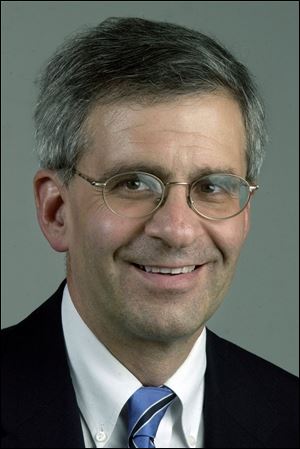
COMMENTARY
History’s uncertain presidential lessons for Ukraine
5/4/2014
Shribman
WASHINGTON — Most American presidents are reluctant warriors. Woodrow Wilson waited until the escalation of German submarine warfare before he committed to World War I nearly three years after the conflict began in Europe. Franklin D. Roosevelt did not enter World War II until two years after it began — and then not until Pearl Harbor.
Seven decades after his death, FDR remains the template against whom succeeding presidents are measured. And so it is not necessary to delve deeply into the best account of President Roosevelt at war, James MacGregor Burns’ important 1970 volume, Roosevelt: The Soldier of Freedom, to discover a classic account of a president in anguish about international conflict. His preface:
“The proposition of this work is that Franklin D. Roosevelt as war leader was a deeply divided man — divided between the man of principle, of ideals, of faith, crusading for a distant vision, on the one hand; and, on the other, the man of realpolitik, of prudence, of narrow, manageable, short-run goals, intent always on protecting his power and authority in a world of shifting moods and capricious fortune.”
Mr. Obama faces terrible choices as Russian President Vladimir Putin thrusts Ukraine into crisis. As this crisis deepens, Mr. Obama faces critics. But mostly he faces difficult questions and uncertain historical lessons.
● The Sudetenland. The similarities with Adolf Hitler’s aggression in Czechoslovakia in 1938 are obvious: claims of repressed nationality and phony grievances in a land contiguous to the aggressor. But for all his venality and brutality, and perhaps his greed and expansionism, if Mr. Putin harbors a genocidal impulse, it is far less apparent than that of Hitler.
Potential lesson: While Hitler sought elbow room beyond his borders, Mr. Putin seeks to assert his primacy in an area regarded for more than a century as part of his country’s sphere of influence — a subtle but important difference.
● The rebellions in Hungary and Czechoslovakia. There are fateful and frightening similarities between those two uprisings behind the Iron Curtain and the determination of free Ukraine to retain its independence from Russia. But the outcome in 1956 was sobering. The United States talked bravely about its support for the Budapest rebels, and Radio Free Europe stirred the insurgents. But ultimately, the United States failed to provide military support.
Potential lesson: Britain and France went to war with Germany in 1939 after the violation of the borders of Poland. But France shared a border with the aggressor state, and Britain was within air-striking distance. Ukraine is 5,000 miles from the United States, and the nation is war-weary and chary of international involvement.
None of this analysis can be the least bit encouraging to Mr. Obama, who faces different but difficult circumstances. Nor will be Mr. Burns’ views of the origin of the struggle between the North Atlantic Treaty Organization and the Warsaw Pact:
“I have concluded that the decisive turn toward the Cold War came during [World War II], at the very time when Anglo-American-Soviet relations were, on the surface, almost euphoric — indeed, partly because they did seem euphoric.”
On at least this we can agree: There is no euphoria here. Only bad options.
David Shribman is executive editor of the Pittsburgh Post-Gazette.
Contact him at: dshribman@post-gazette.com